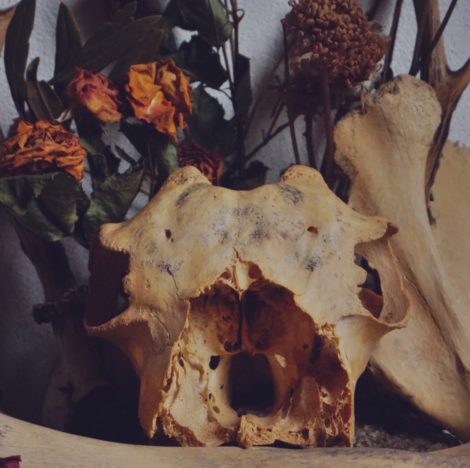
Animal magick is strongly related to ancestral magick, at least in my system. Spirit animals can work as messengers and guardians during ancestral communion. The use of animal bones acquired ethically can be helpful for ancestor work, especially if they are also representative of your cultural, familial, or personal spirit animals. Photo by Radiana Piț, Instagram: @crowhag
Ancestral magick, ancestor work, or as I call it, “ancestral communion”, holds a sacred and central place in my belief system and practice. I revere it just as much as I do natural and animal magick. The essence of these three pillars of magick are an inherent part of the natural and metaphysical world, and so it is inherent to each and every single one of us. I’ve become aware of this early in my childhood, largely due to my ancestors and cultural heritage.
Everyone’s experience of ancestral magick is different and it is influenced by factors such as family history, culture, blood ancestry, magickal ancestry, personal belief system, and more. I found that, regardless of said factors, the naivety I was born with is what makes my experience of ancestral communion rich and productive. This naivety, which is characterized by simplicity, truthfulness, and a lack of “spiritual sophistication” in the presence of instinct and intuition, is very potent and despite the dedicated study and a lot of experimental practice with ancestral magick, which can often “tame” said naivety, I’ve somehow been able to preserve it.
I recommend the same naive approach when you begin your ancestor work, and this is because often times, naturalness is more potent when dealing with the ancestors because it is symbolic of the traits inherent to your “ancestral family” and it makes you more identifiable to them and vice-versa. For whatever reason you chose to begin your ancestor work, make sure you are candid about it and try to draw from your naturalness, rather than your expectations, emotional ties, and even memories of your ancestors.
When you think of your ancestors, you have to understand that your lineage is old and doesn’t consist of just the recent dead in your family. Your ancestors are ancient, unknown to your memory, you cannot remember them and channel your own projection of them. To put it simply, your ancestors consist of your family, whether known or unknown to you, they are your familial ancestors, the ancients who are your cultural ancestors, the magical ancestors who may or may not be genetically related to you, but whom you’ve chosen as part of your family, and then there’s something else, an “undefined energy” that comes from the very proverbial beginning of the lineage through each of the ancestors.
That energy is natural, untamed, and it reflects in your own naturalness, but in order to draw from it safely, you can have the members of your lineage intercede and trust that they will only allow to come through what you can handle. This is why the members of your lineage that you work with have to resonate with you. It’s easier to do so working with the ancients or familial ancestors that have passed before you were born and to whom you feel attracted to.
Familial ancestors who have been a part of your life when they were alive or those who have passed recently might not be ideal to work with because of the emotional attachments that may be involved. Likewise, if you’ve had family members that were toxic to you, you might experience the same toxic effects if working with them in death. However, be sure to forgive, ask for forgiveness, or say what you have to in order to release yourself and them from the emotional attachments that may not serve you.
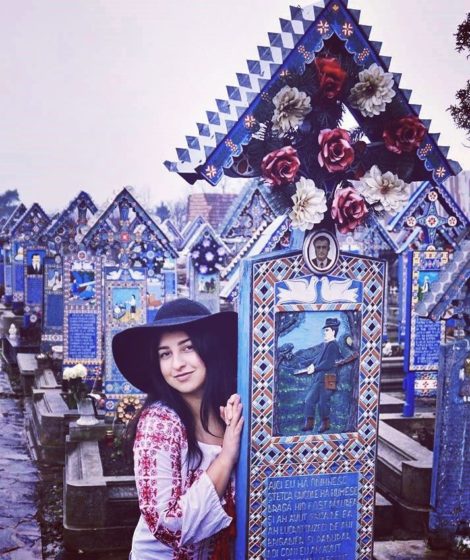
The Merry Cemetery in Sapanta, Maramures county, Romania is famous for its tombstones with naive colorful drawings, the distinct shade of blue called ‘Sapanta blue’, and for the sincere and funny depictions of the deceased’s live through drawings and poetic epitaphs. The making of these tombstones became a respected craft and it has great artistic value. It’s the most ‘death positive’ cemetery in the world and its philosophy is derived from the Zamolxianism of the ancient culture of the local Dacians. I often use it as an example to depict how my culture influenced my naive approach and fundamental understanding of the dead. A death positive attitude is necessary for ancestor work. Photo of Radiana Piț by Kevin Davis. Instagram: @crowhag
The ancient and familial ancestors are not only soothing for one’s soul, but they can also help channel that untamed energy at the very beginning of the lineage, which your intuition might tell you it’s your very essence and you would not be wrong, to do work such as healing, divination, and clairvoyance if you feel inclined to do so. You can do the same if you know of ancestors who have been healers or psychics and call upon them to impart that power and ease you into it.
But the ancestors from the ancients to the magical may serve you in different ways. They might fulfill requests you make, they might send you visions of immemorial times or the future, warn you about certain situations, protect you against spiritual threats, and much more. And the communions you make with them help you sharpen your magical sense and perhaps even attain wisdom in some aspects.
So, for whatever reason you decide to start your ancestor work, make sure you have a fundamental understanding of your ancestors and the dead. Before you learn of your family, genetic, and cultural history, which is something you must do as you begin your ancestor work, be sure to revisit your perception of the dead, what you feel when you think of “the dead”, and if necessary, return to that simplicity with which you thought of “the dead” in childhood and look at your cultural tradition for inspiration.
Folklore and tradition are important to our understanding of the dead, especially if the dead we’re trying to work with were immersed in said tradition. And even though you may not use tradition as practice, it helps form your comprehension, which stands at the basis of your ancestor work.
I was born and raised in Transylvania, Romania. Transylvania is a confluence of culture and although my family is Romanian whose ancestors are mainly the ancient Daco-Thracians and the Greeks, the Transylvanian Saxons and the Hungarians have also contributed to what the Transylvanian heritage truly is. And this is significant because my cultural heritage influenced my mythical beliefs, which in turn have influenced my spirituality.
A significant part of the Romanian folklore and spiritual culture is dedicated to the veneration of the dead. The tradition of honoring the dead also ran in my family and this was significant for me in my childhood. Aside from the celebrations, ceremonies, and traditions that most Romanians took part in as well, my experience with dead veneration and ancestral communion was also marked by my family’s inherent affinity towards passing down family history and the history of our ancestors, but especially by my paternal grandparents’ behavior towards the dead.
I’ve spent a significant part of my early childhood with my paternal grandparents who lived across a cemetery, less than 5 minutes away from our home. Almost every single day when it was warm and sunny, my grandmother went for long walks in the cemetery. And she took me with her every time. While other children spent their time on the playground with their grandparents, I spent most of my time outside with my grandmother in the cemetery, and happily so I might add.
For my grandmother, the cemetery was quiet and it relaxed her, but for me it was vibrant and alive. She always sat on a bench next to some distant cousin-in-law’s grave and I would always sit next to her just to greet said cousin, before I went on my exploration of the cemetery in the company of my “friends” there. I’ve looked at every tombstone, photo, and picked mirabelles from every single bush and tree in that cemetery.
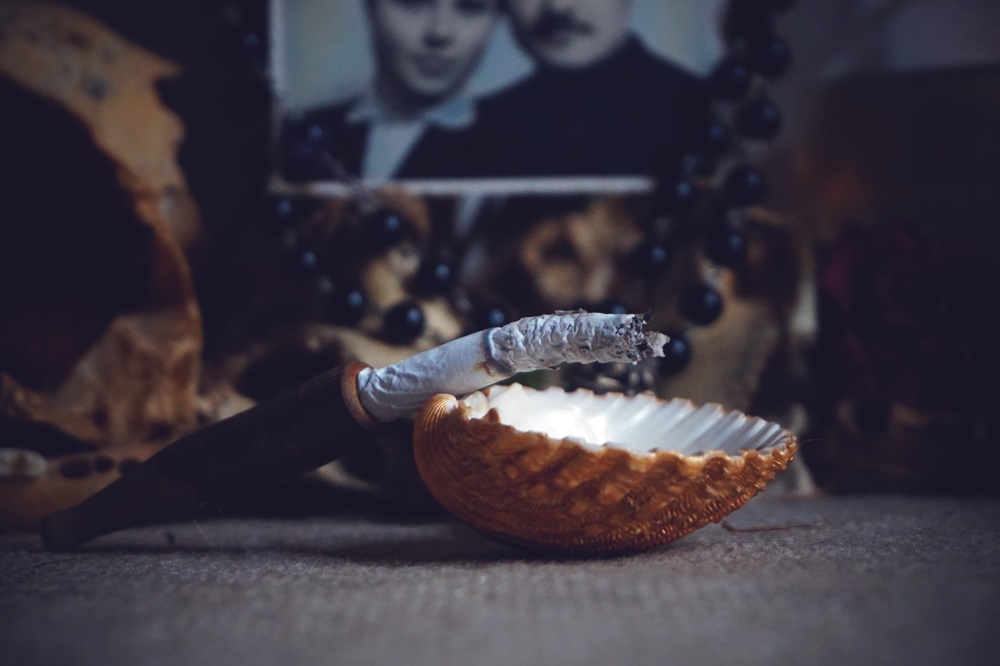
In many traditions and dead veneration practices throughout the world it is customary to offer cigarettes, especially for the dead who loved smoking. While many smoke at the graves of the deceased and leave a lit cigarette for them at their graves, I prefer (and recommend) a more discreet approach in the comforts of the ancestor work-shrine built for them. For this offering, I use the wooden cigarette holder that belonged to my grandfather. Photo by Radiana Piț, Instagram: @crowhag
When the fruit I picked was sweet, I’d conclude that the dead nearby was good. And when the fruit was sour or bitter, I was convinced that the dead nearby was just as sour and bitter as the fruit. Although this was regular pastime, I always discovered a new story, a new friend, a new relative of someone dead who’d tell me stories of the one they were visiting there, and it was always fascinating and endearing. As I matured in my adolescence and adulthood, I continued to return to that cemetery to visit old friends, and I continue to do so, especially now that both my grandmother and grandfather are buried there.
My grandfather never joined my grandmother and I in our cemetery walks. He was bedridden at the time from a fatal car accident he had before I was born. That accident almost killed him, leaving him in a coma for six months. The doctors said he wouldn’t survive or if he did, he would forever be brain damaged and in a vegetative state. They considered him a walking miracle for surviving the accident, the medical interventions, and waking up from the coma without any brain damage.
But he was not the same. While he was in the six-month coma, my grandfather never opened his eyes, but he spoke. He spoke to the dead relatives of the doctors, nurses, and complete strangers that were in the same hospital room as him. He also spoke with the dead relatives in our family and he seemed to have acknowledged my grandmother’s presence, who was at his bedside every day and night. My grandfather’s conversations with the dead were loud and my grandmother often heard him saying he’ll go with them, but she insisted and begged him not to. When he finally woke up, his ability to speak to the dead stayed with him. He could hear and sometimes even see them.
I visited my grandfather in his room every night before bed, and asked him about those he saw and was always curious what else was out there that I couldn’t see. My grandfather told me stories about our ancestors, our family, his post-war childhood, his beliefs, and he taught me chiromancy as much as I could understand it back then. He read my palm, and allowed me to practice by reading his.
He always took it up a notch and pulled another interesting book from his bedside cabinet, which was converted into a small library of his favorite books on medicinal herbs, palmistry, the paranormal, Romanian history, and… cars. I remember one night from that learning period when I came across a book, which I can’t really remember anything about other than the fact that it had depictions of the devil pulling a child from their bed by their legs into a hell that seemed to be located under the child’s bed. That image struck me and upon seeing it, I remember feeling a spike in my heart, which is a feeling I still experience today when I look at empty and dark hallways.
I remember asking him what was happening in that picture, but before he could give me any insight, my grandmother interrupted us to ask me to go to bed because it was late. She let the door open for me to go to my room, and I could see the dark hallway I had to go through to reach my room. My room seemed so far away at that moment and I was terrified for the first time to go through that hallway I’ve crossed in the dark many times before.
My grandfather took the book from me and wished me good night and I told him I was afraid to go. He asked why and I replied that the devil is in the hallway and I didn’t want to cross him. My grandfather raised himself halfway up, looked down the hallway and symbolically spit towards it, as Romanian superstitious folks do, and told me that now I was safe to go to bed. Now, through all the dark and scary hallways in my life that I have to cross, I know that my grandfather, Babacu’, as we all lovingly called him, is with me.
Because of these experiences in my early childhood, I have a unique understanding of the dead and my ancestors, from the recent to the ancient ones and I carry them with me. Your ancestor work and ancestral communion start with your very own understanding of the dead and knowledge of the ancestors.
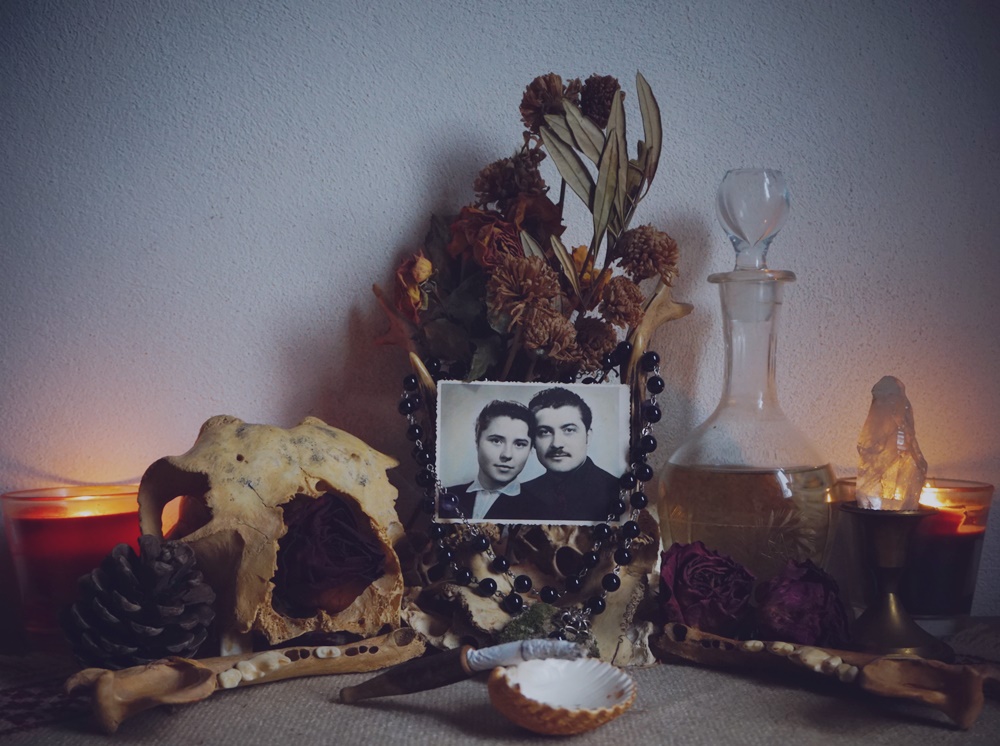
Ancestor work-shrine. While there should always be a place for your ancestors in your heart and on your altar, ancestor work-shrines shouldn’t be constantly open and on display, unless they are attended to. These shrines should not be neglected and only used for ancestor work and celebrations such as birthdays, death dates, and days dedicated to the dead. Photo by Radiana Piț, Instagram: @crowhag
Ancestral Communion and Necromancy
All cultures of the world from European, to Asian, African, and Oceanian, from Sumer to Mesoamerica, and from pre-history to the present, have their own versions of veneration of the dead, ancestral communion traditions, and a day of the dead. And from the Egyptian Book of the Dead to the Bardo Thodol, there are plenty of texts that describe the transition from life to the afterlife.
Your own understanding of ancestral communion is defined by the traditions of dead veneration you’ve inherited and those you identify with, followed by your own personal experiences or lack thereof with your ancestors. This makes it an understanding of dead veneration that is unique to you and which comes naturally as a result of the aforementioned factors.
When you actively seek ancestral communion, it is almost impossible not to do so without the practice of some form of necromancy. From Shamanism to Obeah, most systems include the practice of necromancy, on their own terms of course. I will not focus on specifics, because regardless of which day of the dead you celebrate, your cultural heritage, and your choice of spiritual practice, ancestral communion works on the same principle of actively seeking the dead by means of necromancy based on a fundamental understanding that you are your own ancestors.
You are the result of your ancestors’ lives, it’s in your genetic memory, in your spirit, and in your very essence of being. Furthermore, their gods, myths, and their pantheons are part of your magickal legacy and they deserve a place in your cult of the ancestors which I will elaborate on later. For now, I’ll insist on this fundamental understanding a bit more
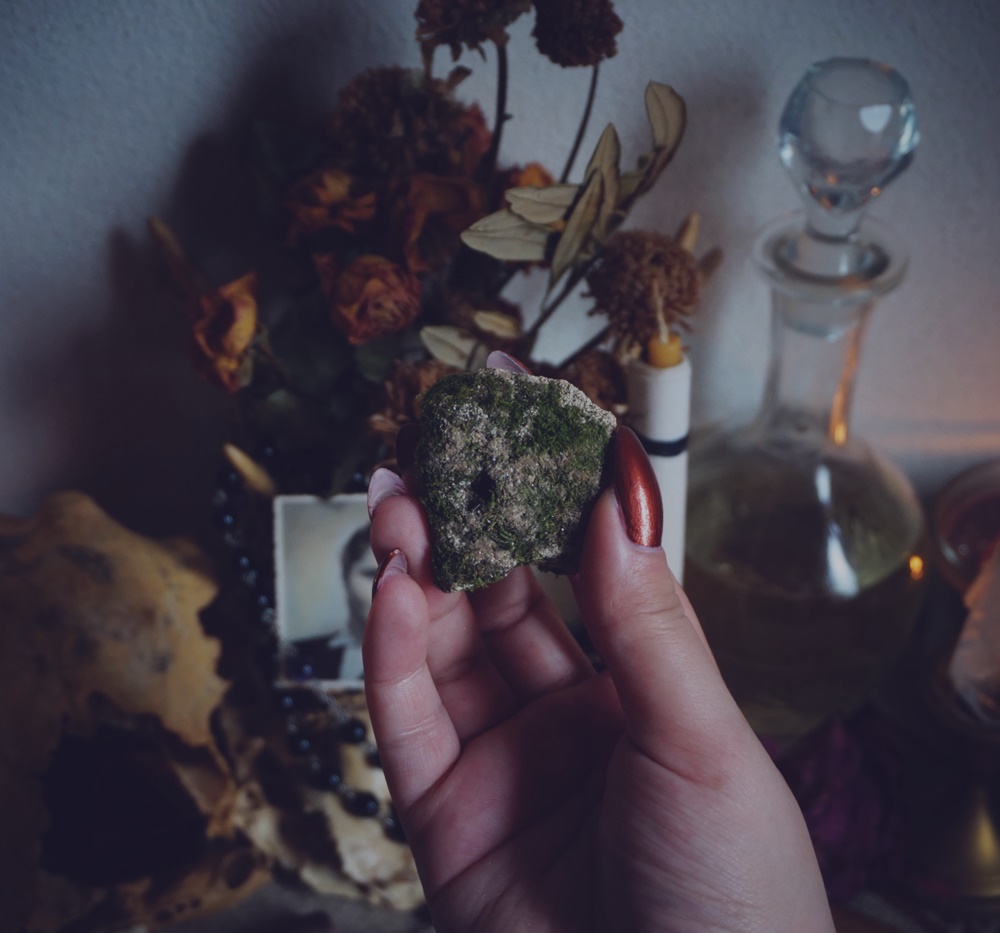
Rock from the ancient Dacian capital, Sarmizegetusa Regia. Rocks are said to retain ‘memory’ and energy from their places of provenance. I always have it on my altar and I place it on my ancestor work-shrine during communion with the ancients as a symbol of my Daco-Thracian ancestors. Photo by Radiana Piț, Instagram: @crowhag
Once you’ve identified with your own ancestors, you begin to know them. If you start close to home, perhaps you begin your communion with the spirits of recent ancestors. And from there you can go further back, to your ancient ancestors and if you feel adventurous, you can go even further, although I recommend against it, unless you’re very experienced in dealing with primeval manifestations of energy which can be uncontrollable.
If you are naturally hypersensitive to spirits, you may easily seek your ancestors intuitively, without the need of any form of practice. A simple meditation could be sufficient to open the door to ancestor work. However, whether you’re hypersensitive or not, always protect yourself before a communion, because unless you already have an established cult of the ancestors, you may encounter unpleasant spirits, even among your ancestors.
As I’ve said before, everyone’s experience of spiritual communion is different, but for many is similar to a meditation, a trance, or a conversation with the spirits. It can be ceremonial, on occasion and according to your tradition, or it can be a continuous flow, heightened by ceremony and from which you can unplug when you choose to do so. But to be honest, not many practitioners can commit to the continuous flow of ancestral communion.
Contrary to popular belief, you shouldn’t reserve your ancestral communion for celebration dates dedicated to the veneration of the dead or celebrations when the veil between worlds is lifted. On those days make sure you do honor the dead and commune with your cult of the ancestors, but if you believe that you are your own ancestors, then any day of the week is the right day to begin your ancestral communion as long as you feel it in your bones.
You can start by clearing your mind and allowing it to blend your imagination and memory into a vision of your ancestors or a specific ancestor you’d like to call upon. Meditate on that vision and allow your intuition to guide you. The more you do this, the more familiar you become with this process and it’ll start coming to you naturally.
Then you can start introducing objects into the process, little by little. You may use photos, jewelry, clothing, dust from their graves, hair locks, or any object that might’ve belonged or could be associated to a recent or even distant ancestor. Additionally, you may use location as a way to grow closer to their energy by visiting their resting places, homes, or places of significance associated to them.

Certain objects can be very potent during ancestral communion. While animal bones can represent spirit animals and work as messengers and guardians, a hair lock from an ancestor can represent them and placing it on your ancestor-work shrine may convey to them that they are welcomed to join you in the communion. Photo by Radiana Piț, Instagram: @crowhag
Once you are familiar with the energies and you’ve nominated the very first spirits you’d like to continue to commune with, you may dive into it and prepare offerings for them. Think of it as if you are their version of heaven (which in some regard, you are, we all are). Offer them what you know they’ve loved and enjoyed. Food, water, alcohol, flowers, incense, and lit candles are usually among the favorites of the dead. Place them with your objects and begin your invocation.
Before you end your ceremony, eat the food or drink the water you have offered, so they will draw it from you, and only then give thanks and end the ceremony. Your ceremony may differ according to your practice, it may involve sigils, burying the food, or performing it in the cemetery or another place significant to the dead.
However, I believe that unless this is part of a traditional celebration or an occasion such as the Day of the Dead, doing this in your own home is more respectful, discreet, and safe. You can do this type of ancestor work on occasion and according to tradition, but if you feel like there is more to explore here, you may start creating your cult of the ancestors.
Cult of the Ancestors
The Cult of the Ancestors is first and foremost a commitment. It’s a commitment to the continuity of your family lineage, as well as ancestral and magickal lineage. Secondly, your Cult of the Ancestors is a temple for your ancestors, gods, legacy, and even for yourself and your descendants.
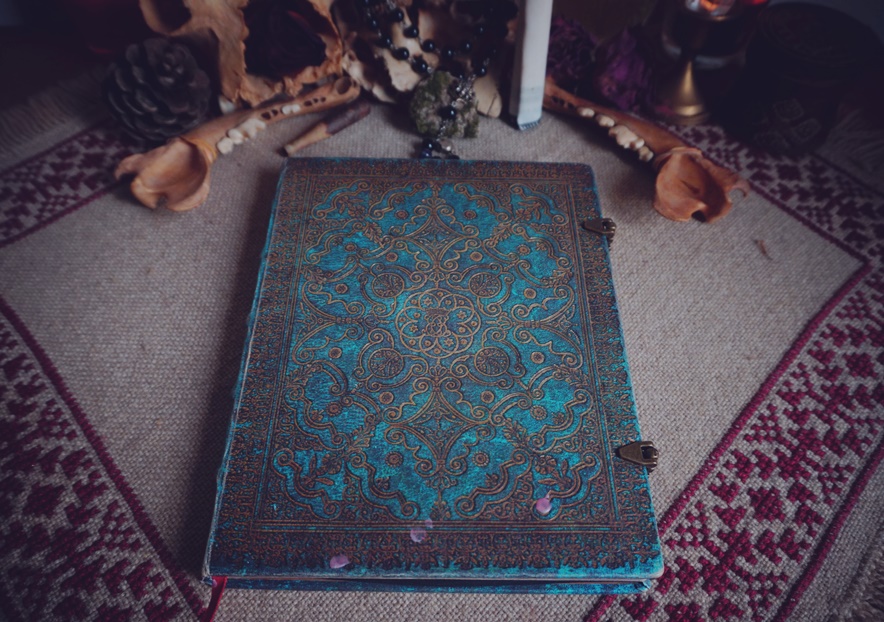
An important part of the cult of the ancestors is keeping a written chronicle of your cultural, familial and magickal ancestry in the way you perceive it, with collected lore, history, and accounts of your communions. This will not only serve you, but it may serve your descendants in the future. Photo by Radiana Piț, Instagram: @crowhag
The metaphysical aspect of the cult of the ancestors involves the creation of a pantheon that consists of your ancestors and gods, documented history as well as mythical history, folklore and family lore, and the corpus of all aforementioned elements, as well as magickal workings, traditions, and celebrations that you know of from as far back as you can investigate and are of importance to you, as well as an account of yourself, your practice, and spirituality. Since it can be rather impossible to remember it all and the part involving you implies that you will continue to add to it in the future, I recommend the written version of the corpus, which brings me to the physical aspect.
The physical aspect of the cult of the ancestors involves setting up an altar or a shrine, which again, you will do according to your own tradition. It should contain objects that have belonged to your ancestors, and organic elements such as sea shells, animal bones acquired ethically which help intercede between you and the ancestors, dried flowers, dust, wood, or stones which would be ideal if you could get them from your ancestral locations, and also symbols and representations of the gods that were most significant to them but which are also in resonance with your own spirituality.
On traditional celebrations, dates of death and birth, as well as every time you wish to commune with a certain spirit of a dead relative, set their portrait on the altar or shrine, but do not leave it there if you are not working with it. On the same occasions, put fresh flowers on your altar and allow them to wither until the next occasion.
For your written corpus, there is a lot of information you must gather and remember as I’ve mentioned before, but don’t allow yourself to be intimidated by it. There is no deadline for it, so write it all down, little by little. Include in it an account of your experiences with the ancestors and your visions and dreams of them.
If you will have descendants, whether by blood or not, this will be part of your legacy to them and establish your authority. Nowadays, you can also record what you gather and remember, but for discipline purposes, sit down when you can and write down what you’ve recorded. It’ll give you a chance to revisit the information and reformulate it more coherently.
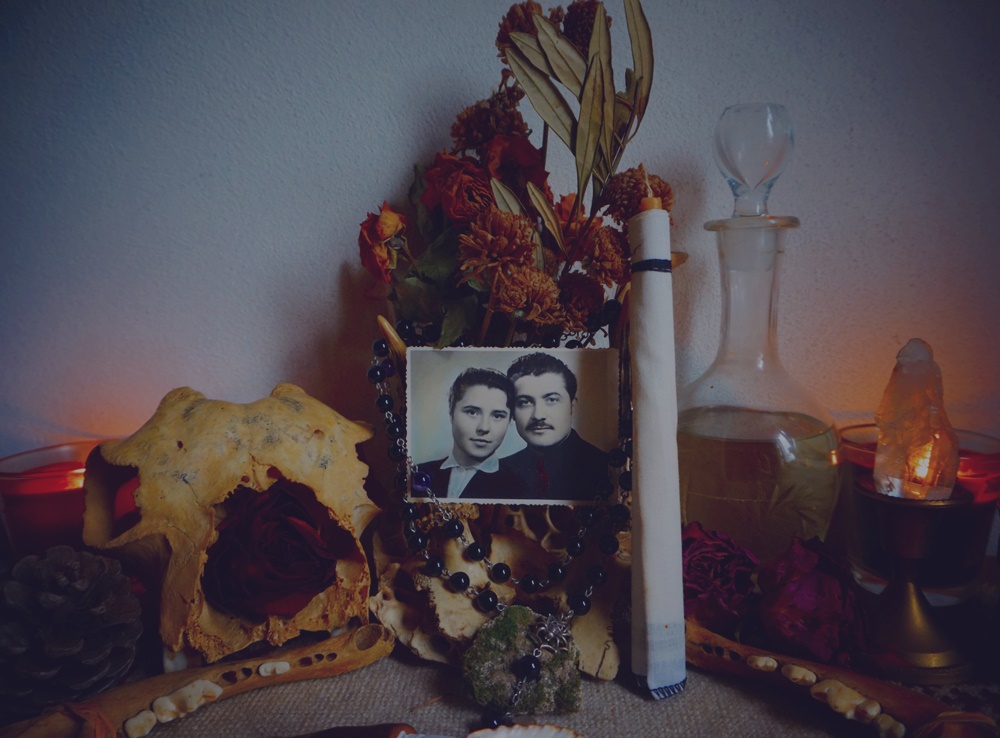
This specific ancestor work-shrine is dedicated to my grandparents and for my communion I used their photo, as well as animal bones and a rock from the ancient Dacian capital for the intercession of spirit animals and the ancients. I’ve also used dried flowers, incense, candles and țuica (traditional Romanian spirit) as offering, and a dried olive branch I’ve kept from Greece to honor my Greek ancestry from my grandmother’s side. The candle covered in white fabric and tied with a black thread is a funerary candle traditionally given in Romania to the attendees of someone’s funeral. This one is from my grandmother’s funeral and I only use it to imbue with energy, rather than light it – which is something I keep for another occasion of a greater importance. Photo by Radiana Piț, Instagram: @crowhag
As you can see, your cult of the ancestors is not separate from you, at least not to me. Just as I’ve said about the spirits in animal magick, it’s an inherent part of you and it is an extension of who you are. While your cult of the ancestors will continue to expand for as long as you live if you are dedicated to it, the creation of the cult is marked by your established bond with the ancestors, which doesn’t need a written corpus to occur.
Finally, keep in mind that you don’t have to work with “dead people” you don’t like. Your Cult of the Ancestors consists of your magical, ancestral, and familial lineage and you choose to whom you bring offerings and commune with. But a true Descendant will not exclude anyone, because they understand that it’s not their personalities from life they commune with, but the Ancestral Spirit which is present in all of the ancestors. The Ancestral Spirit is an egregore in which the astral impressions and memories of mankind’s physical and metaphysical ancestors are crystallized.
Likewise, they will understand that while this is true, each ancestor has their own identity and it should be respected for what it is, regardless if they choose to honor and remember them or not. But generally, those who enter the Cult of the Ancestors are respected, honored, and remembered, they are loved and beloved, regardless if their identities are known to us or not, if we remember them from when they were alive or from legends, history books, and folk tales.
Once the cult of the ancestors is created, you may commune with it to support your practice. All types of practitioners from healers and mediums to witches and shamans do this on their own terms, of course, for divinatory purposes, to perform better, attain wisdom, or simply to be in the presence of spirits that love and nurture them. But to me, there’s more to the cult of the ancestors that is left unexplored by many. On this note, I’ll end by saying: let us always remember the good dead, the wise ancients, and the immemorial ones, lest they be lost to us in the mists of oblivion.

www.Nettlesgarden.com – The Old Craft


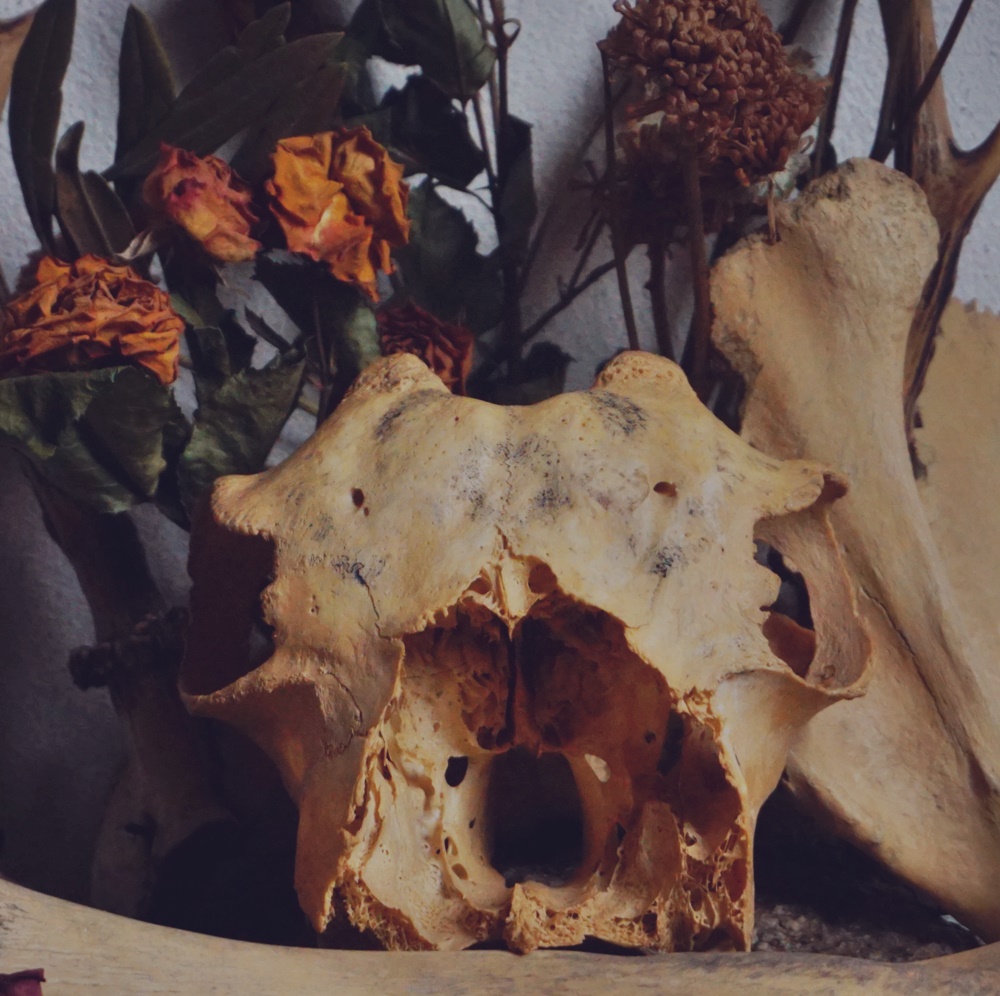
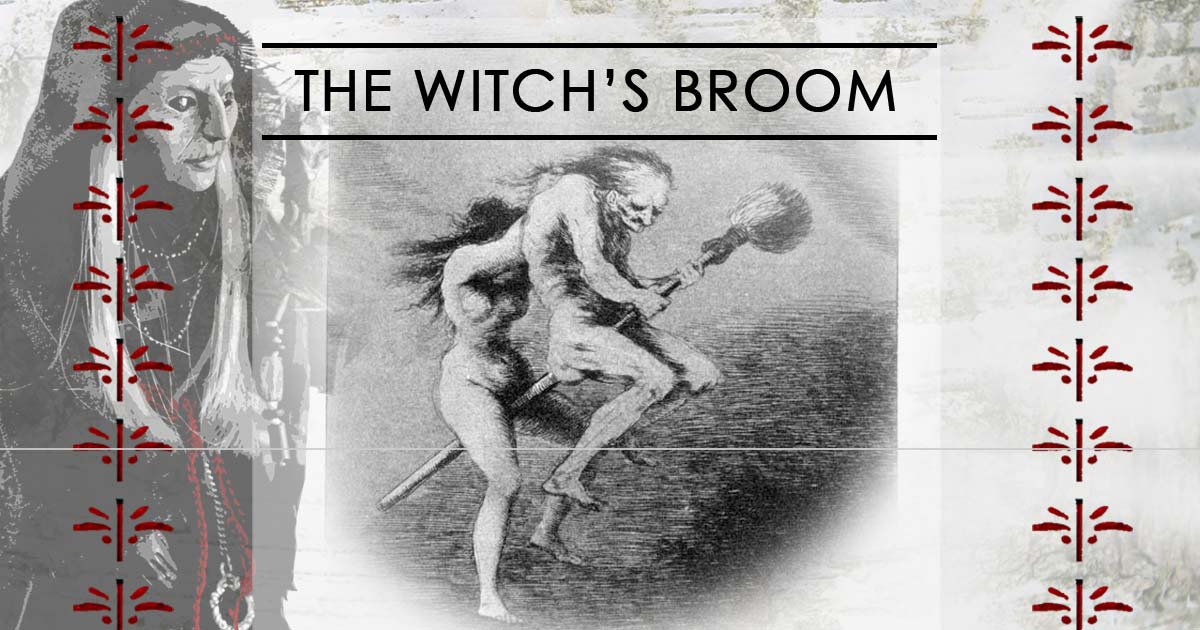
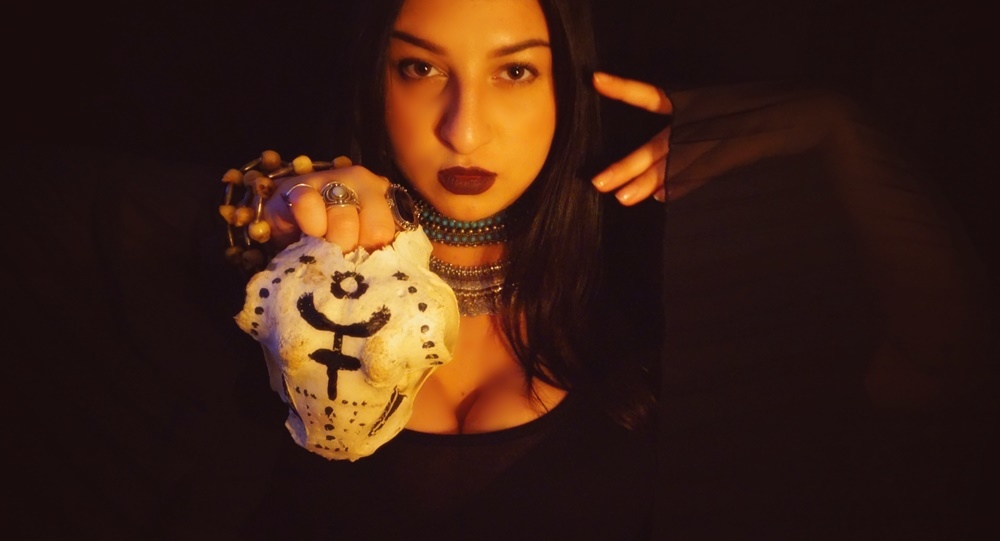
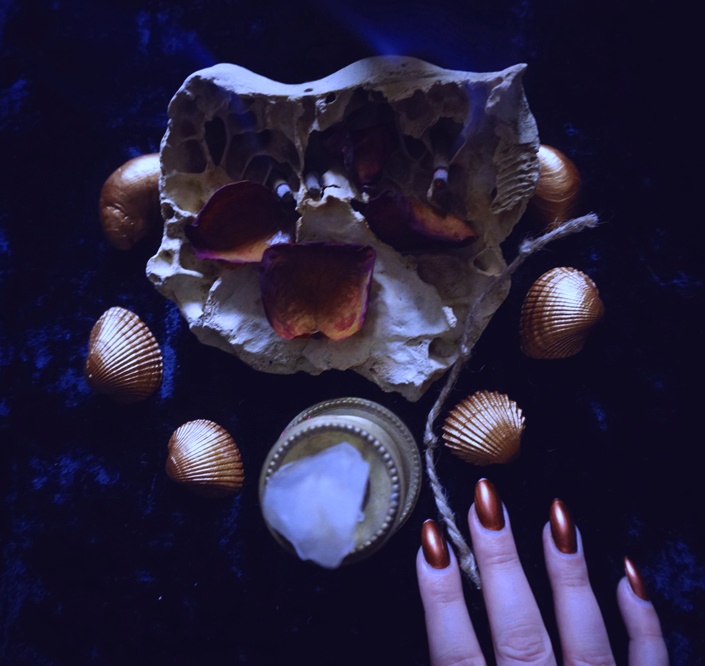
Selene | November 2, 2018
|
Hello,
I discovered your site by researching ancestor worship. your article describes a really very interesting approach.
However, I realize that for people who, like me, do not know their parents of origin and cfoup or their blood ancestors the connection will prove very complicated to establish because: no names, faces, objects, personal effects,…
So although they are there, the communication is complicated because there is no anchor. the fact of not having objects or information to hang on does not guarantee secure access to the ancestors of the blow is more complicated!
Thank you for your article
Joseph | May 15, 2019
|
everything is an Essence of an Energy. call your ancestors and even if you do not know of them, trust me, they will know you
IFADOYIN | November 11, 2023
|
Truth.
Elizabeth Reynolds | August 8, 2020
|
Hello thank you for your post are there any books you would recommend for ancestral magick?
Deanna morris | February 1, 2021
|
You probably tell me more.. 3/12/71 owl/ fire/ Irish methidest/ always had sarah/ intution is excellent after i put protection blessing my own mix with psalm 91 lent shield kept sword etc mote be few arch angels Michele Ariel. figg Inanna i left out should have put in.. 10 mins after mentioning someone they turn up.. Saturn and Another war planet not sure now.. Very old book handed to me i already knew what i had old boyfriend took it scared of it i had seen both by then not a complete reigous person look for protection blessings cursed as a baby..only just told.. Can you look more for me My name is Deanna christine morris maiden name gosper, wenhams and Farley mothers side. Muxlow other side mother grandfather.. Dad gosper, smith, ???